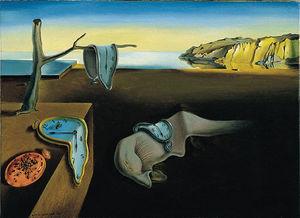Course Description & Requirements (back to top)
This graduate seminar addresses aspects of the development and functioning of history museums and exhibitions (conceived of as temporary museums). First of all, what makes a museum a museum? Then: What is a history museum--what features distinguish one from other types of museums? What range of institutions or exhibitions might be considered history museums? Where, when and why did they originate? How have they changed over time--can we make out phases in their development, or key events/exemplars that changed the nature or purpose of (history) museums? What functions have they had and do they perform, and how have those changed over time? Finally, what effects do they have? How well have they fulfilled their functions? How can we assess that?
The course is designed for students with an emphasis in public history or reception history (how historical events have been portrayed and perceived over time). However, since most historical topics have some type of museum associated with them, any advanced student should be able to participate with profit in their area of specialization. Since my own expertise is in contemporary and European history, many of the examples are drawn from that area, but participants are encouraged to establish foci in the areas they know best as well.
This seminar is more research- than reading-based. Although there are some common core readings, the topics are to be developed by examining specific museums.
Requirements
- The format of the weekly sessions is that everyone read the core reading, and select one museum or site that they will research and present under that week's aspect. The research is not to be exhaustive, but what one can find out in a few hours of focused searching and reading. A 1-2 page handout on each museum should be distributed to each participant each week. It should contain core information such as dates, descriptions, varying interpretations, and annotated resources.
Additionally, as the seminar progresses and participants choose "their" museum (see no. 5, below), each of us will be expected to contribute about that museum as well.
- For each seminar meeting one student will take minutes summarizing the main results of the discussion. This should be posted on Gauchospace by Wednesday 8pm.
- I would like to use the Gauchospace website forum to extend discussion beyond the classroom, with post-seminar postings each Tuesday, and pre-seminar postings by Sunday evening, 8pm. The post-seminar contributions can be thought of as follow-up on discussion, open questions or reading suggestions; the pre-seminar postings should contain preliminary thoughts about the core reading, perhaps additional references with brief annotations (why it might be relevant, how found, notes on content), or interesting results about the individually researched museum for that week.
- There will be one Saturday field trip to several historical museums in Los Angeles. The selection will be made from: Autry Museum for the American West, Japanese-American National Museum, Los Angeles Museum of the Holocaust, Museum of Tolerance, Museum of Jurassic Technology.
- The formal written requirement for the course is a ca. 15 page case history of a museum (or an aspect of several museums) in the student's area of interest, with an annotated bibliography of resources.
|
 Salvator
Dali, "The Persistance of Memory," 1931
Salvator
Dali, "The Persistance of Memory," 1931